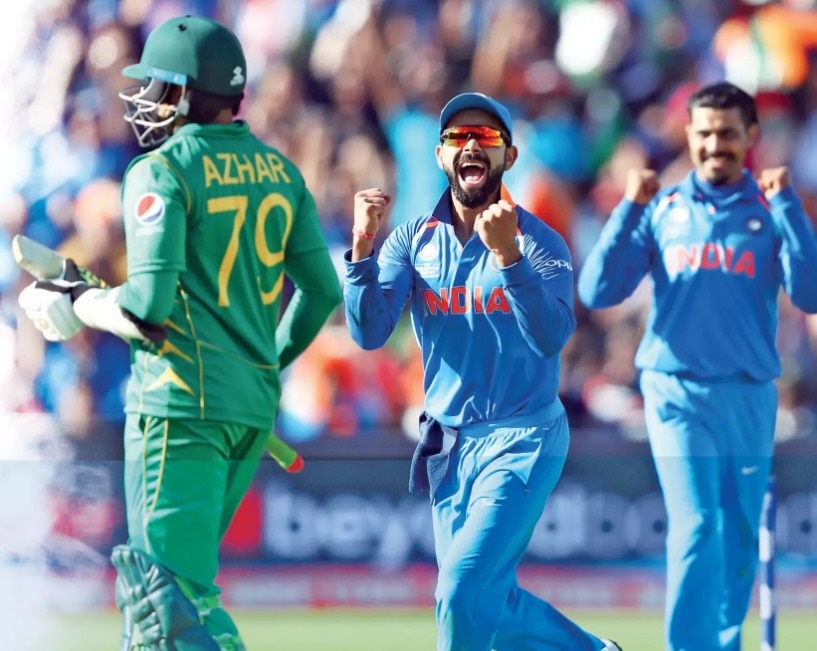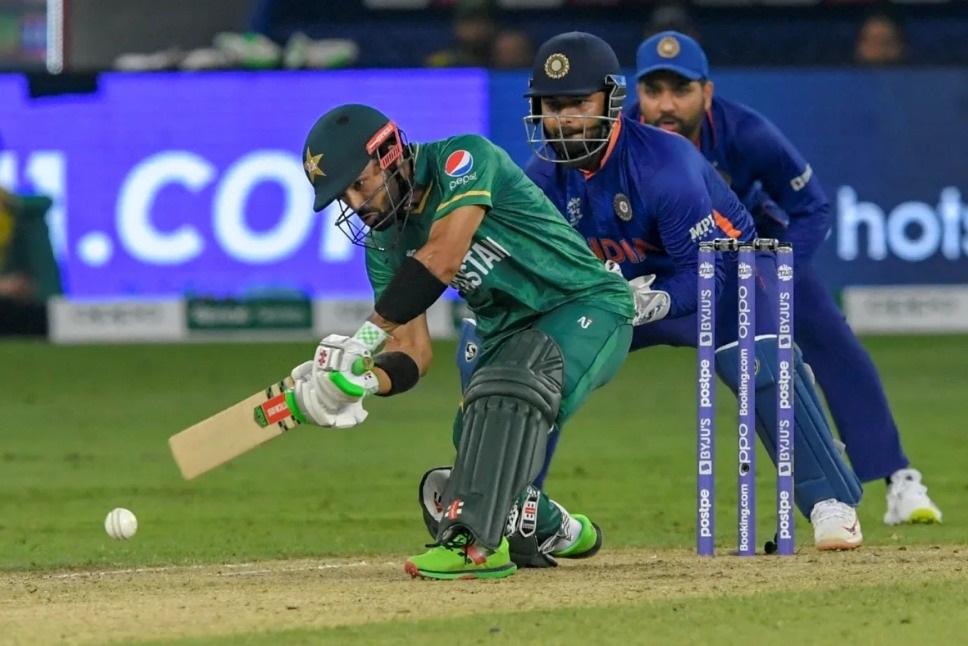
Written by: Waseem Abbas
Posted on: July 05, 2023 |  | 中文
| 中文
Winners of World Test Championship (WTC) 2021-23. (L to R) Josh Hazelwood, David Warner, Pat Cummins, Steven Smith and Mitchel Starc
With the proliferation of T20 leagues around the world, the future of international cricket looks bleak. The way cricket is being played has experienced a sudden and dramatic transition, with more international players trying to polish their skills to meet the demands of the modern-day T20 leagues. International cricket, especially Tests and One Day Internationals (ODIs), have become sparse and garner less traction than ever. The changes that international cricket has undergone in the last ten years are disruptive, sudden, dramatic and point to a new normal in the cricketing milieu, which the old school would find hard to digest.

Indian players, Virat Kohli and Ravindra Jadeja, celebrate the wicket of Pakistan's Azhar Ali in 2017 Champion Trophy
Cricket aficionados of the last two decades ago would have difficulty imagining top international players skipping their national duties for a domestic tournament in another country. It has become a norm in the last few years, as the lucrative Indian Premier League (IPL) lures elite cricketers with million-dollar contracts. Many elite cricketers, including Jason Roy, James Neesham and Trent Boult, amongst others, have refused to sign their national contracts, which would have bound them to the Board's approval before playing any league. This way their availability to leagues is always guaranteed. However, hardly a few cricketers prefer international cricket over IPL, like Australia’s fast bowler Mitchel Starc, who said when asked as to why he had been skipping IPL since 2015: “Money is good, but I would like to play 100 tests for Australia”. Another Interesting development that leagues cricket is making, or bound to make, is offering cricketers million-dollar contracts for their recruitment in franchise cricket for the whole year. Mumbai Indian, an IPL franchise, has reportedly offered England’s fast bowler Jofra Archer three million USD per year for full-year availability with the team. If this development materializes, a new era in franchise cricket will begin, where national boards would be bound to get the approval of domestic teams before selecting any player for international matches.
If league cricket overtakes international cricket in popularity, just like the financial outputs, international cricket will be played only in World Cups, a similar pattern to football. Test cricket will probably survive the debacle, perhaps because of it being the most revered format for cricket fans around the globe. International ODIs, and T20I too, will face the consequences of the rising popularity of the leagues, and they will be played sporadically at the international level. We have seen a decreasing number of Tests and ODIs in the last few years, compared to the pre-T20 leagues era. Pakistan has 27 Tests scheduled in the 2023-27 Future Tours Program (FTP) Cycle, while South Africa has 28, Sri Lanka 25, West Indies 26, and Afghanistan 21. Only the big three are playing more Test matches, with Australia getting 40 Test matches, while England and India have 43 and 38 matches respectively. Moreover, the big three are scheduled to play each other more frequently than any other nation, as 78 games are scheduled between them in this upcoming cycle. ODIs in the cycle are reduced to 10 matches per year on average, even for top teams like India and Australia, to create room for various T20 leagues started by different countries. These facts forecast one thing about the future of international cricket, and that it might give way to league cricket soon.

Pakistan's Muhammad Rizwan plays a sweep shot, while India's Rishab Pant and Rohit Sharma can also be seen
An important question that needs to be asked is: what prompts cricketers to choose leagues over internationals? Many factors play an important role, but financial security for a lifetime that leagues offer, stands out as the most important one. International cricketers have relatively short career spans, as hardly a few cricketers have managed to play for over 20 years. At an age when professionals from other career paths reach their zenith, it is time for cricketers to retire from international cricket. It is, therefore, logical for players, especially those who are at the tail end of their careers, to think about their financial security. Since there is a huge disparity in remuneration between international and league cricket, players prefer to play for leagues. Australia's captain, Pat Cummins, who is the highest-paid international cricketer with estimated 2 million USD earnings from Cricket Australia (CA), earns less than the most expensive IPL player, Sam Curran, who made 2.25 million USD in 2 months. The fear of getting dropped from the national team compounds the shorter career spans and comparatively lesser pay at the international level and makes their transition to leagues more imminent. Playing 20 overs cricket is less exhaustive and draining, and with age, players fear that their careers would be cut short if they get injured playing longer formats (50 over cricket and Tests) at the international level.
It is argued that cricket is going through an evolutionary transformation, a continuation of its journey from a game of amateurs in the British Empire in the 16th century to a global sport. As they say, ‘Change is the only constant’, and this transition should be welcomed, but precautions are needed to safeguard the legacy of international cricket made over the centuries. These necessary steps include, but are not limited to, increasing remuneration for international matches (particularly for Test cricket), ensuring competitiveness in international matches and their adequate marketing, regulating players' availability for leagues, and maintaining a healthy relationship between boards, amongst others.
You may also like: